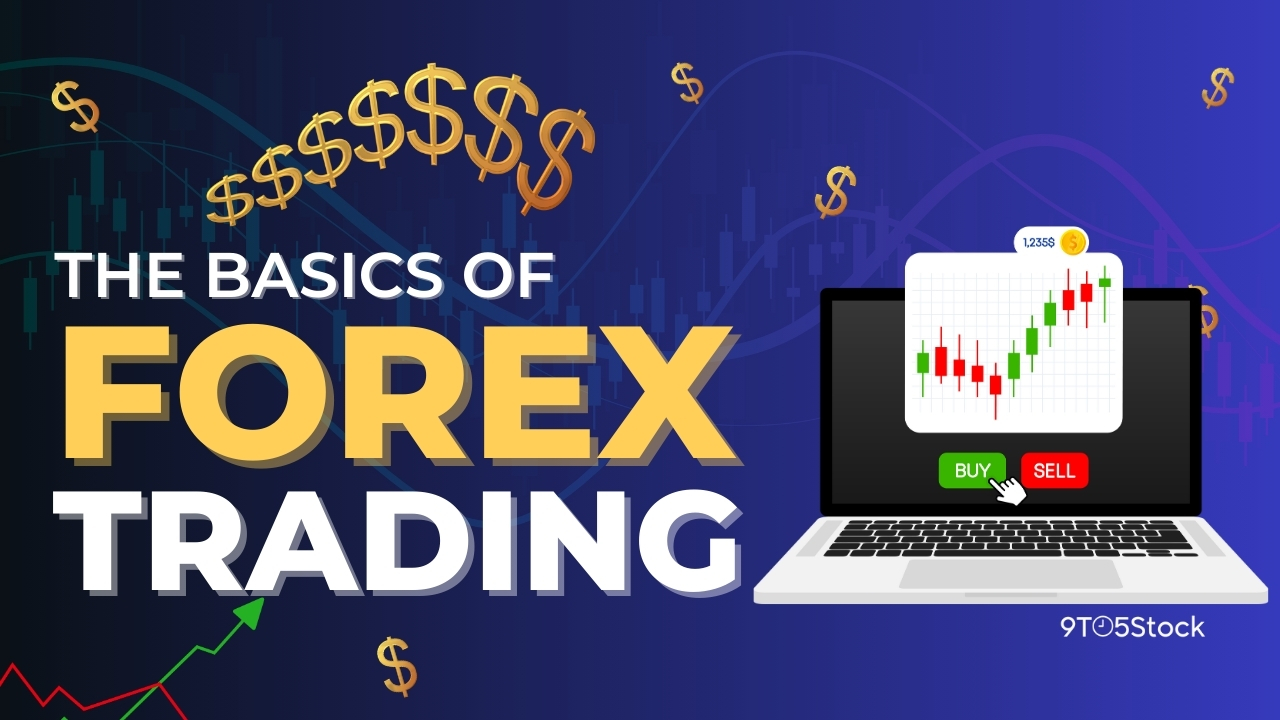Introduction to Forex Trading
In the world of financial markets, Forex trading stands out as one of the most dynamic and accessible avenues for individuals and institutions alike. Forex, short for foreign exchange, revolves around the buying and selling of currencies on the global market. This market operates 24 hours a day, five days a week, offering ample opportunities for traders to capitalize on fluctuations in currency values.
What is Forex Trading?

Forex trading involves the exchange of one currency for another with the aim of making a profit. Unlike stock markets, where investors buy shares of companies, in Forex, traders speculate on the price movements of currency pairs.
Understanding the Foreign Exchange Market
The Forex market is decentralized, meaning it doesn’t have a central exchange. Instead, trading occurs electronically over-the-counter (OTC) through a network of banks, brokers, and financial institutions.
Participants in Forex Trading
Key players in Forex include central banks, multinational corporations, hedge funds, and individual traders. Each participant contributes to the market’s liquidity and volatility.
Why Forex Trading is Popular?
Forex trading has gained popularity due to its accessibility and technological advancements. Unlike traditional markets, Forex can be accessed online through trading platforms offered by brokers.
Accessibility and Technology
Advances in technology have democratized Forex trading, allowing anyone with an internet connection and a computer or smartphone to participate in the market.
Potential for Profit
The Forex market’s vast size and liquidity provide ample opportunities for traders to profit from currency price movements, whether the market is rising or falling.
Key Concepts in Forex Trading
Currency Pairs Explained
In Forex trading, currencies are quoted in pairs, such as EUR/USD or GBP/JPY. These pairs represent the value of one currency relative to another.
Major, Minor, and Exotic Pairs
Major pairs involve the most traded currencies globally, like EUR/USD and USD/JPY. Minor and exotic pairs involve currencies of smaller economies or those less frequently traded.
Base and Quote Currency
A currency pair consists of a base currency (the first listed) and a quote currency (the second listed). The exchange rate indicates how much of the quote currency is needed to purchase one unit of the base currency.
Understanding Pips and Lots
What are Pips?
Pips are the smallest price movements in Forex trading, typically measured to the fourth decimal place for most currency pairs. They represent the incremental change in value between two currencies.
Types of Lot Sizes
Lot sizes in Forex determine the volume or size of a trade. Standard lots are 100,000 units of the base currency, while mini and micro lots allow for smaller trade sizes suitable for beginners or those with limited capital.
Opportunities in Forex Trading

High Liquidity and Market Hours
The Forex market’s liquidity ensures that traders can enter and exit positions at any time during market hours, facilitating efficient trade execution.
Benefits of a 24-hour Market
Forex operates 24 hours a day, starting with the opening of the Asian session and closing with the New York session. This continuous trading allows for flexibility and responsiveness to global events.
Impact of Liquidity on Trading
High liquidity means there is a large number of buyers and sellers in the market, reducing the risk of price manipulation and ensuring competitive spreads.
Must Read: How to Use Support and Resistance Levels to Make Better Trades?
Leveraging and Margin Trading
Leverage enables traders to control larger positions with a smaller amount of capital, amplifying potential profits and losses.
How Leverage Works
Leverage is expressed as a ratio (e.g., 100:1), indicating how much the trader can control compared to their invested capital. While it enhances profitability, it also increases the risk of substantial losses.
Risks and Rewards of Margin Trading
Margin trading allows traders to borrow funds from their broker to increase their position size. However, it requires careful risk management to avoid margin calls and potential liquidation of positions.
Risks Involved in Forex Trading
Volatility and Market Risks
The Forex market is highly volatile, influenced by factors such as economic data releases, geopolitical events, and central bank policies.
Factors Affecting Currency Volatility
Currency prices can fluctuate rapidly due to unexpected news events or changes in market sentiment. Traders must stay informed and adapt quickly to market conditions.
Mitigating Risk through Strategies
Risk management strategies, such as setting stop-loss orders and diversifying trades, are essential to protect capital and minimize potential losses.
Psychological Challenges
Trading psychology plays a crucial role in a trader’s success. Emotions like fear and greed can cloud judgment and lead to impulsive trading decisions.
Emotions and Trading Decisions
Successful traders develop emotional discipline, sticking to their trading plan and avoiding reactionary decisions based on fear or overconfidence.
Developing a Trading Plan
A well-defined trading plan includes entry and exit strategies, risk tolerance levels, and criteria for trade selection. It helps traders stay focused and disciplined amid market fluctuations.
Also Read: ESG Investing: Aligning Your Investments with Your Values
Technical and Fundamental Analysis

Technical Analysis Tools
Technical analysis involves studying historical price charts and using indicators to forecast future price movements.
Common Indicators and Charts
Popular technical indicators include moving averages, Relative Strength Index (RSI), and Fibonacci retracement levels. Charts such as candlestick and line charts help visualize price trends and patterns.
Using Technical Analysis in Trading
Traders use technical analysis to identify entry and exit points based on chart patterns and signals generated by indicators.
Fundamentals Driving Currency Movements
Fundamental analysis focuses on economic data and geopolitical events that impact currency values.
Economic Data and News Events
Key economic indicators like GDP growth, interest rates, and employment reports influence currency strength and market sentiment.
Long-term vs. Short-term Trading Strategies
Traders adopt different strategies based on their time horizon and market outlook, whether trading intraday or holding positions for weeks or months.
Choosing a Forex Broker

Regulation and Security
When choosing a Forex broker, regulatory oversight ensures the safety of funds and fair trading practices.
Importance of Regulatory Compliance
Regulated brokers adhere to strict standards set by financial authorities, providing transparency and investor protection.
Evaluating Broker Reputation and Reviews
Reading reviews and checking broker ratings can help traders assess a broker’s reliability, customer service, and trading conditions.
Trading Platforms and Tools
Features of a Reliable Trading Platform
A user-friendly trading platform should offer real-time quotes, customizable charts, and access to technical analysis tools.
Demo Accounts and Educational Resources
Demo accounts allow new traders to practice trading strategies without risking real money. Educational resources, such as webinars and tutorials, help beginners learn the basics of Forex trading.
Getting Started in Forex Trading
Opening a Trading Account
Steps to Register with a Broker
Registering with a Forex broker involves completing an online application, providing identification documents, and agreeing to terms and conditions.
Account Verification and Funding
After registration, traders verify their identity by submitting documents such as a passport or driver’s license. Funding the account follows, typically through bank transfers or electronic payment methods.
Developing a Trading Strategy

Setting Realistic Goals
Successful traders set achievable goals, whether aiming for consistent profits or long-term wealth accumulation.
Testing and Refining Strategies
New traders should test their strategies in a demo account before risking real capital. Refining strategies based on performance analysis is crucial for adapting to changing market conditions.
Conclusion
In conclusion, Forex trading offers substantial opportunities for profit due to its liquidity, accessibility, and technological advancements. However, it also comes with inherent risks, including market volatility, leverage magnification, and psychological challenges. By understanding these dynamics and adopting sound trading practices, individuals can navigate the Forex market effectively and responsibly.
Must Read: How to Trade Like Warren Buffett: Secrets from the Oracle of Omaha
FAQs about Forex Trading
What is the best time to trade forex?
The best time to trade Forex depends on the currency pairs and trader preferences. Generally, the most active trading sessions overlap during major market openings.
How much money do I need to start trading forex?
The amount needed to start trading Forex varies, but many brokers offer mini or micro accounts with low initial deposits, making it accessible for beginners.
What are the most traded currency pairs?
Major currency pairs like EUR/USD, USD/JPY, and GBP/USD are the most actively traded due to their liquidity and global importance.
How can I protect myself from forex scams?
To avoid Forex scams, traders should choose regulated brokers, conduct thorough research, and be wary of promises of guaranteed profits or unrealistic returns.
Can I trade forex with a full-time job?
Yes, Forex trading offers flexibility as the market operates 24/5. Many traders manage their trades outside of regular working hours, leveraging technology and mobile trading apps.
Hello guys! My name is David Wilson, and I'm a passionate stock market enthusiast and the founder of 9to5Stock. With a deep understanding of market dynamics and a commitment to empowering others, I share valuable insights, strategies, and updates to help investors like you make informed decisions and achieve financial success. Welcome to our community, and let's thrive together in the world of investing!
